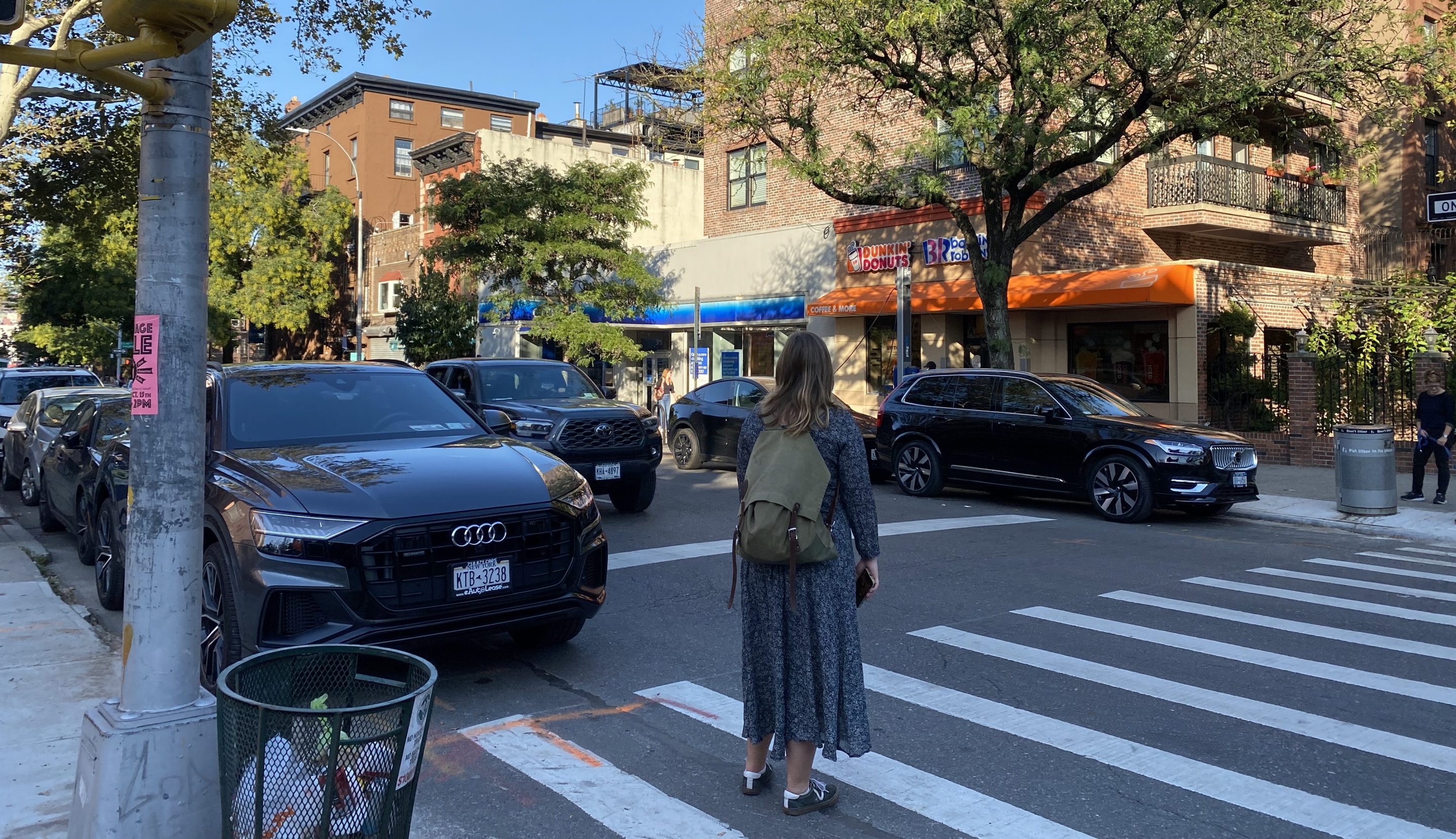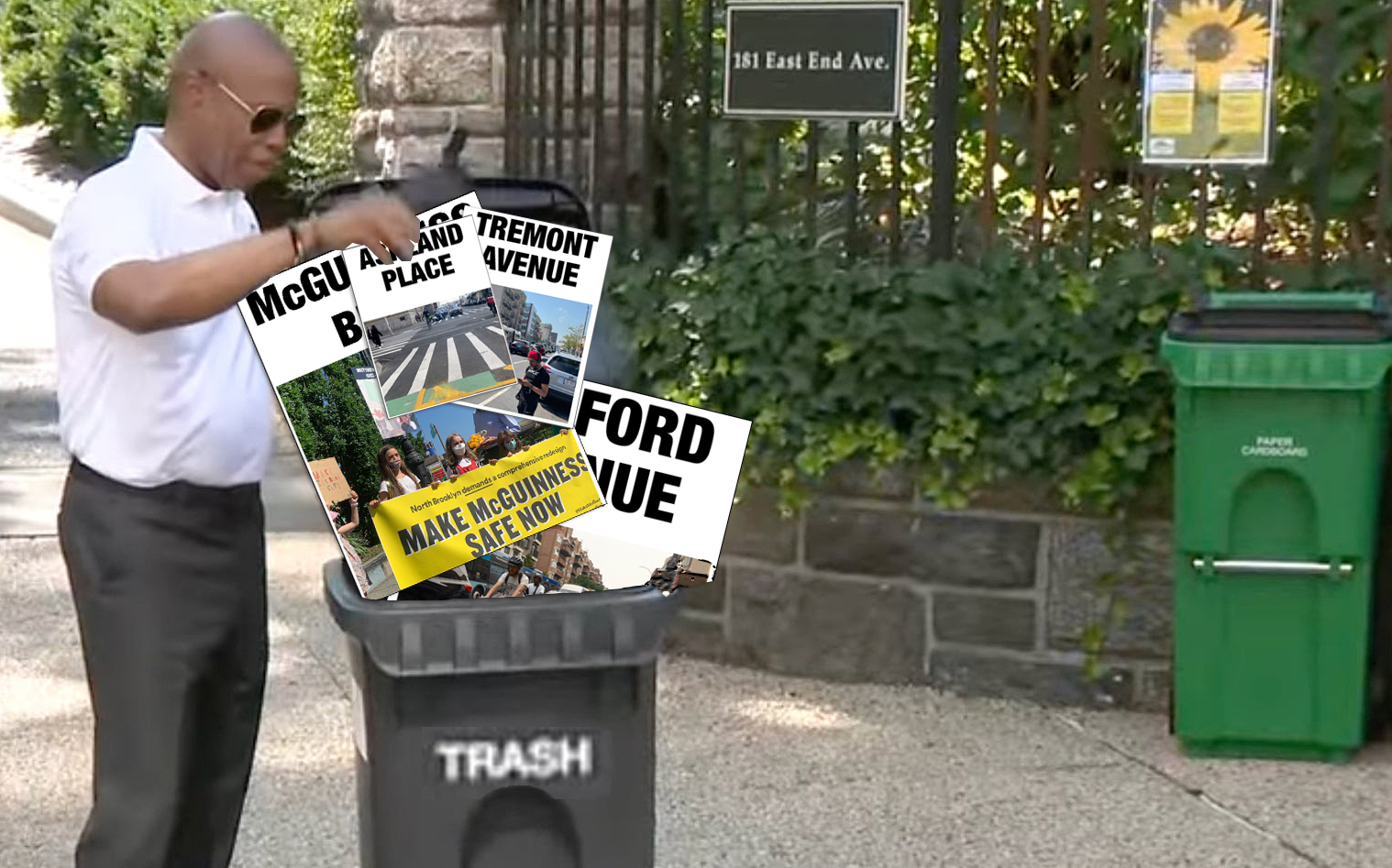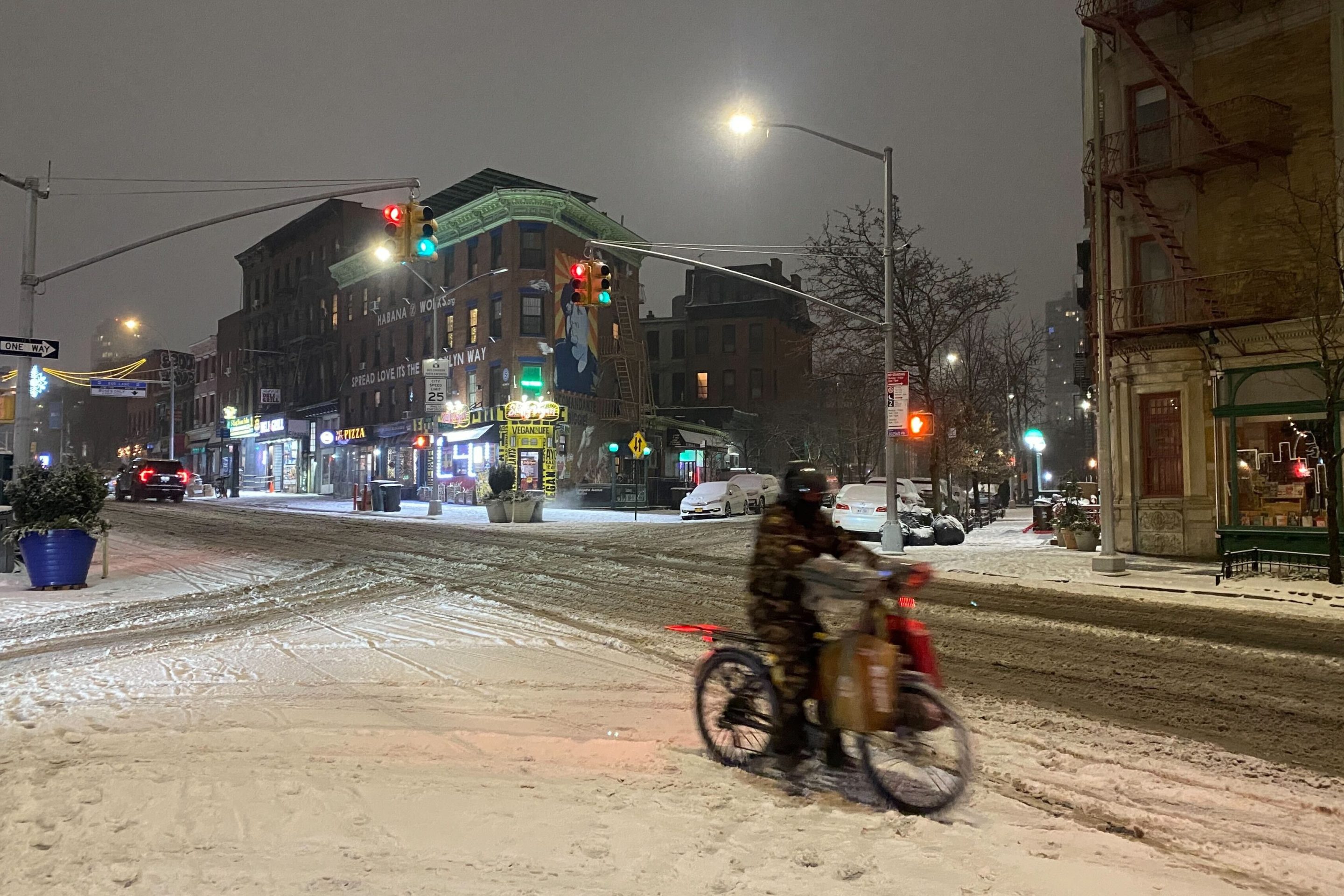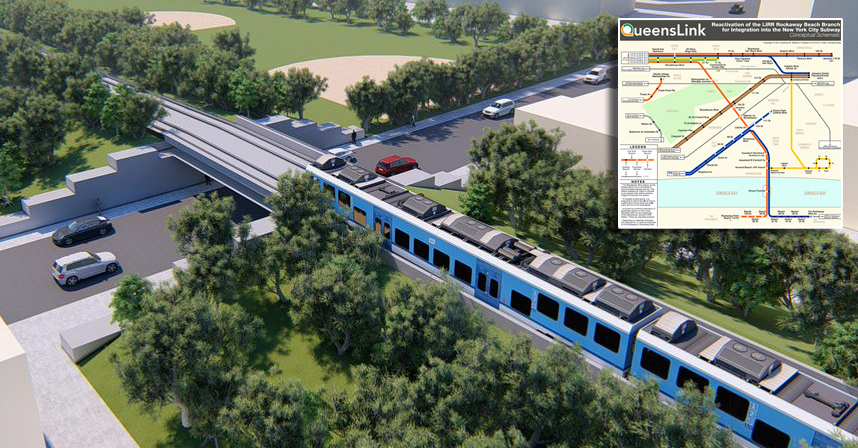Mayor Adams must clear city intersections of parked cars, a Brooklyn community board declared on Wednesday — the second such panel to push for the well-established street design treatment known as daylighting.
State law bans drivers from parking within 20 feet of a crosswalk — but Albany has long allowed New York City to exempt itself from the provision to make space for car storage even though it blocks visibility for pedestrians and drivers. As a result, drivers routinely park up against (or in) the crosswalk, making it hard for pedestrians and oncoming traffic to see each other.
Brooklyn Community Board 6 — representing Park Slope, Gowanus, Cobble Hill, Carroll Gardens and Red Hook — overwhelmingly passed a resolution Wednesday night calling on the Department of Transportation to ban parking near intersections, following in the footsteps of Queens Community Board 1.
Queens CB 1's call to action in June came after the horrific vehicular killing 7-year-old girl Dolma Naadhum at an intersection in Astoria where parked cars blocked visibility. That resolution directly inspired Brooklyn CB 6's statement, according to one board leader.
“We don’t want to wait for tragedy, we know what works and we want to get it done,” said CB 6 Transportation and Public Safety Committee co-chair Doug Gordon. “We felt that we should take a more proactive approach in the district, and daylighting is a really low-hanging fruit.”
Manhattan community boards are eyeing similar resolutions, according to one board member in that borough who asked not to be directly identified since the efforts are still in their very early stages.
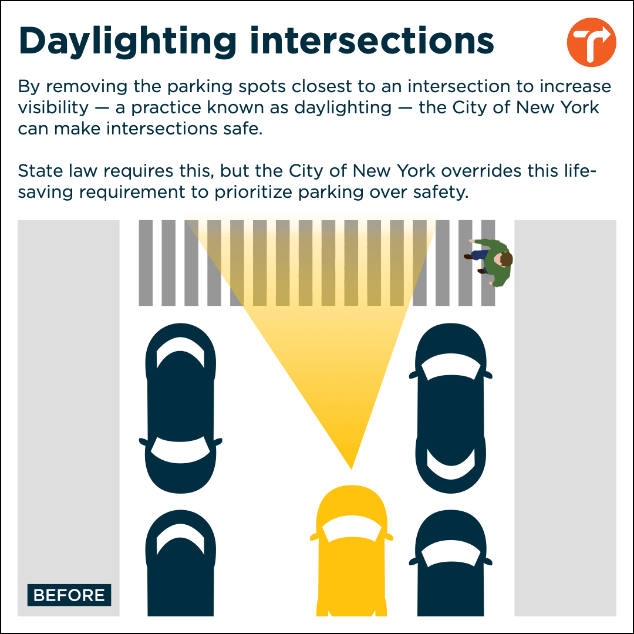
In testimony before the City Council in February, DOT Commissioner Ydanis Rodriguez defended the city's opt-out, saying that daylighting is "not the right solution everywhere," and that the design "must be implemented with physical infrastructure in the newly opened space to prevent vehicles from turning more quickly."
More than half of New York City crashes happen at intersections, the site of the most conflict points between different road users and the highest volume of pedestrians, Colin Brown, a transportation planner with the firm Sam Schwartz told the CB 6 in a presentation last month.
Meanwhile, other cities like Hoboken have aggressively instituted daylighting at more and more intersections — sometimes with just painted markings. The effort dramatically reduced crashes and helped the city achieve its "Vision Zero" goal of no traffic fatalities last year.
CB 6's resolution [PDF] urged Mayor Adams and DOT to drop the exemption and daylight “all possible” intersections with physical barriers.
The motion overwhelmingly passed with 33 votes in favor and just three against. Daylighting could make a big difference at low cost, one board member said.
“This is something that the city can do without a big capital project,” said Marc Torrence. “The lowest level implementation is essentially free, you’re just moving the [no parking] sign back 20 feet from the intersection.”
The Brooklyn panel also put its weight behind a city law that passed the Council in May requiring the city to daylight 100 intersections a year starting in 2025. The Adams administration opposed the proposal, but did in fact implement better visibility at that number of crossings in 2022.
DOT is also placing more bike corrals, boulders, and planters at intersections to keep those spaces clear, officials claim — a clear upgrade over more flimsy pieces like plastic flappers that drivers can easily run over.
We want NYC to be the most bike-friendly city, and that includes expanding bike parking. Today we installed a new #BikeNYC corral on 7th Ave between W 42nd-W 41st St that is 39 racks long!
— NYC DOT (@NYC_DOT) April 28, 2023
Check out our bike parking map for more locations: https://t.co/lfQ22hovbb pic.twitter.com/ItUDeS2S8n
Those kinds of interventions have worked well as part of DOT’s plans to convert pandemic-era open streets into more permanent redesigns, such as on a block of W. 22nd Street in Chelsea. (The video below shows what it looks like on Seventh Avenue in Manhattan.)
Eyes on the Street from our friend, @jeffnovich live from 7th Ave. in Manhattan, where @nyc_dot is hardening previously unprotected, undaylighted space (🙏). Great for avoiding left hooks! See it yourself: pic.twitter.com/xg9SJHtuNi
— Streetsblog New York (@StreetsblogNYC) October 10, 2023
The agency did not respond by press time for comment or to say how many intersections it has implemented daylighting at this year.
